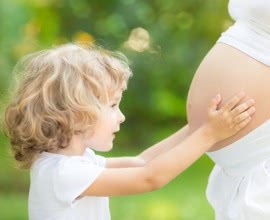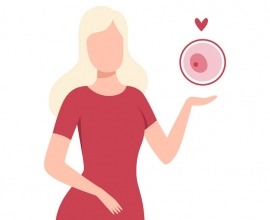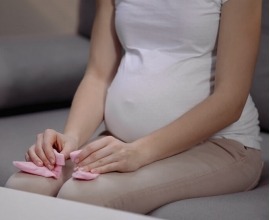Pregnant at 35 or Later - Understanding the Risks and Being Prepared
In the United States, statistics from the Center for Disease Control (CDC) in 2016 have suggested that the birth rates for women between the ages of 30-34 were much higher than women between the ages of 25-29.[1] The trend towards older parenthood is one that is spreading around the global and it has led both medical professionals and older women contemplating the question: is pregnancy in your late thirties a risk?
The old adage scoffs at the notion of age, proclaiming it to be "nothing but a number" but when it comes to getting pregnant, maintaining a healthy pregnancy and having a healthy baby, age can have an effect.[2] This is not to say that women over the age of 35 can't get pregnant or have healthy babies - they can and they do. However, in order to minimize risks and maximize health - yours and the baby's - reading up on the potential risks and ways to maintain a healthy pregnancy can be the smart thing to do.
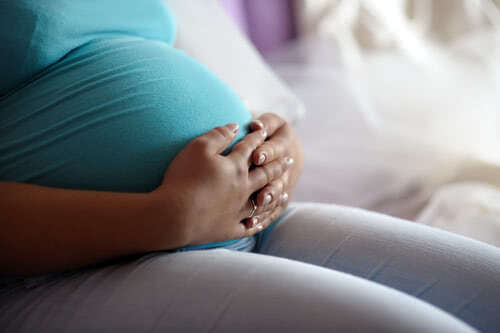
What are the risks of a later pregnancy?
· Decline in fertility
- As women get older, the number of eggs they have, along with its quality decreases with age. This applies to men as well - sperm count, semen volume and quality decreases with age.[3] According to a study in the New England Journal of Medicine, women under the age of 31 who underwent artificial insemination had 74% chance of becoming pregnant within a year. This statistic dropped to 61% for women between the ages of 31-34.[4]
· Genetic risks
- Many studies have implied that as women age, the risk of their child inheriting a genetic issue increases. For example, the rate of having a child with Down Syndrome increases with age - woman at the age of 25 have 1 in 1,064 chance of having a baby having Down Syndrome at the 10-week gestation period; whereas women at the age of 30 have 1 in 686; and women at 35 have 1 n 240 chance.[5]
· Miscarriage
- Miscarriage tends to increase with maternal age, according to medical professionals. Studies indicate that women aged 20-24 years have a 8.9% chance of miscarriage but the number increases dramatically to 74.7% for women aged 45 and over. The reason for this is due to the decreased quality of eggs.[6]
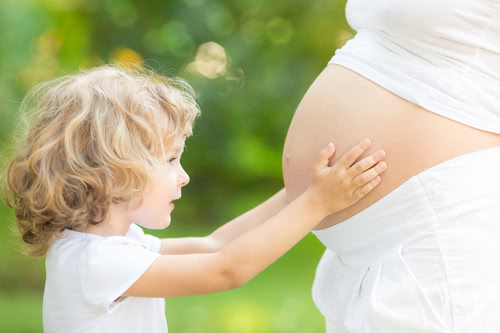
How can these risks be minimized?
· Preconception checkups and regular doctor's appointments
- Prior to getting pregnant, women should take the necessary precautions and make an appointment with their local doctor before conceiving to ensure they are in the pink of health, physically, mentally and emotionally.[7]
- Keeping regular doctor's appointments is also beneficial for women looking to conceive, especially if they suffer from a chronic health issue. Managing these conditions prior to conceiving will help to minimize any potential risks during pregnancy.[8]
· Early and regular prenatal care
- Medical professionals stress that the first eight weeks of pregnancy are crucial for a baby's development. Thus, making early and regular prenatal appointments will help increase the chances of a safer and healthier pregnancy as well as identifying and treating any conditions the developing baby might have.[9]
· Tests specifically for women over 35 who are looking to conceive
- For women over the age of 35, doctors may recommend special prenatal tests to help determine whether or not they are at risk of conceiving a child with a birth defect. The results from such tests will enable the doctor to better counsel and education women who are looking to conceive at a later age.[10]
Sources:
[1] Hannah Nichols, 'Pregnant After 35 - What Are The Risks?', in Medial News Today, published Friday, June 9, 2017, viewed on June 11, 2017, http://www.medicalnewstoday.com/articles/317861.php
[2] Traci C. Johnson, MD, 'Pregnant After 35', in webmd.com, published April 19, 2017, viewed on June 11, 2017, http://www.webmd.com/baby/guide/pregnancy-after-35#1
[3] op. cit, H. Nichols, http://www.medicalnewstoday.com/articles/317861.php
[4] Schwartz D, Mayaux MJ., 'Female fecundity as a function of age: results of artificial insemination in 2193 nulliparous women with azoospermic husbands. Federation CECOS.', in New England Journal of Medicine under pubmed.gov website, published February 18, 1982, viewed on June 11, 2017, https://www.ncbi.nlm.nih.gov/pubmed/7057832
[5] op. cit, H. Nichols, http://www.medicalnewstoday.com/articles/317861.php
[6] Hannah Nichols, 'Pregnant After 35 - What Are The Risks?', in Medial News Today, published Friday, June 9, 2017, viewed on June 11, 2017, http://www.medicalnewstoday.com/articles/317861.php
[7] Traci C. Johnson, MD, 'Pregnant After 35', in webmd.com, published April 19, 2017, viewed on June 11, 2017, http://www.webmd.com/baby/guide/pregnancy-after-35#1
[8] ibid
[9] ibid
[10] ibid

